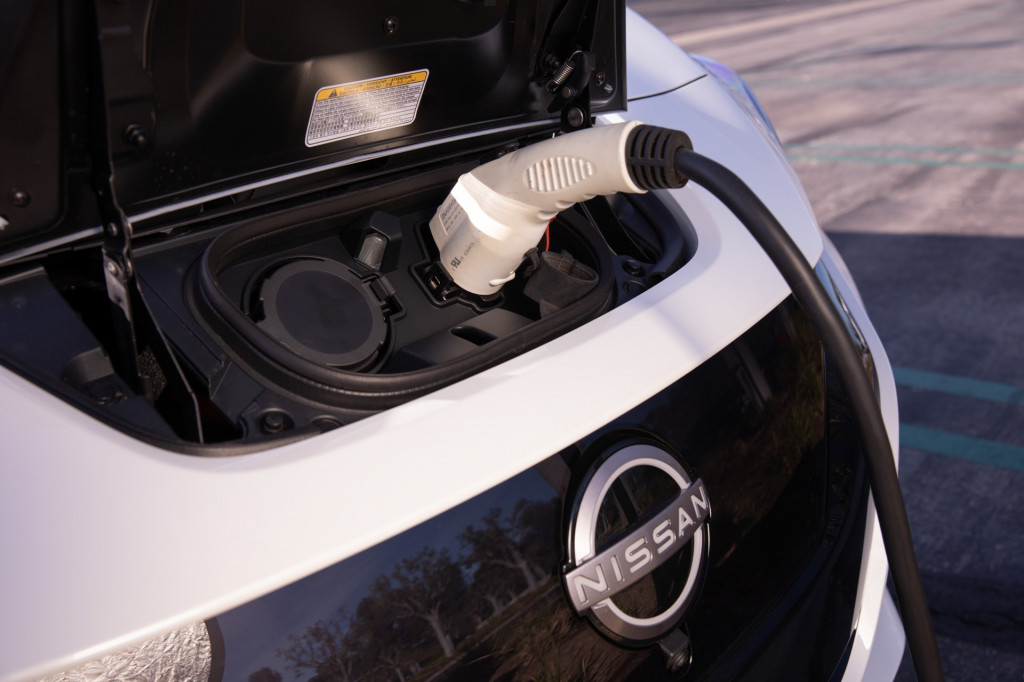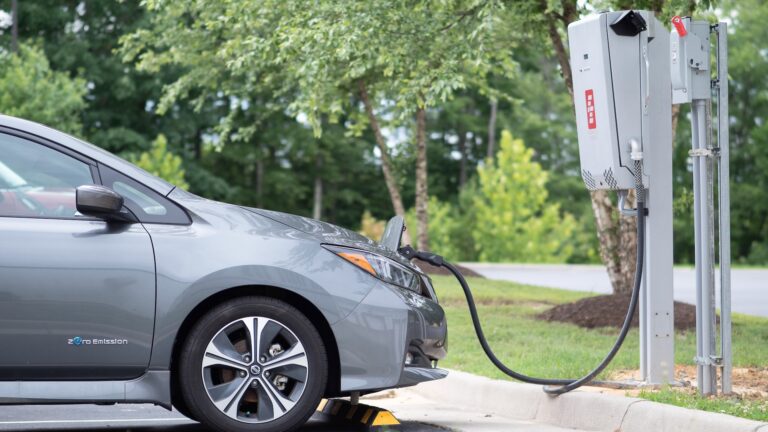Each bidirectional EV charger installed could pay for itself in three years, and earn up to $15,000 over 10 years, according to projections from a firm that provides such equipment.
Chargers installed for vehicle-to-grid (V2G) operation, allowing EVs to discharge power back into the grid, have similar upfront costs to conventional chargers. But they also have the potential to earn money, said Melissa Chan, director of grid solutions and strategic partnerships at Fermata Energy, a tech firm that’s developed a V2G platform, in a recent presentation for the CHAdeMO Association trade group.
In comparison, a conventional unidirectional charger could incur up to $30,000 over a projected 10-year life span from maintenance costs, according to Fermata. It underscores how, in the near future, small fleets—and eventually residential users—may be able to take advantage of this technology to reduce their energy and driving costs.
Revel and Fermata Energy V2G pilot program using Nissan Leaf EVs.
Fermata recently participated in a V2G pilot program with Revel, which operates moped, scooter, and ride-share services in New York City. Revel uses a fleet of electric cars for its ride share service, and installed Fermata bidirectional chargers at its maintenance and repair depot in New York’s Brooklyn borough for the project.
The project involved three of these chargers and three Nissan Leaf hatchbacks. Under an agreement with local utility Con Edison, the cars discharged power from their battery packs back into the grid from 2:00 p.m. to 6:00 p.m. on summer weekdays—when energy demand peaked. Revel earned money from this, but also had the option to unplug the cars if they were needed.
The three chargers could send up to 45 kw of power into the grid. By discharging during afternoons Monday through Friday, the setup could deliver up to 3 megawatt-hours of power monthly, according to Fermata. That’s with nightly charging of EVs as needed.

2023 Nissan Leaf
The pilot shows how V2G infrastructure could be attractive to fleet operators, but it’s not necessarily applicable yet on a large scale. Fermata and Revel had a favorable agreement with Con Edison, but agreements with local utilities are going to vary widely as individual V2G users negotiate with each utility.
Some progress has been made on enhancing V2G viability recently.
Nissan formally approved Fermata’s charger as the first U.S. bidirectional charger for the Leaf earlier in 2022, and California has started to consider V2G charging tech at scale, for grid stability. Although a range of automakers have confirmed future bidirectional charging, a 2020 rumor that Tesla might try to sneak V2G capability into the Model Y proved to be false.


